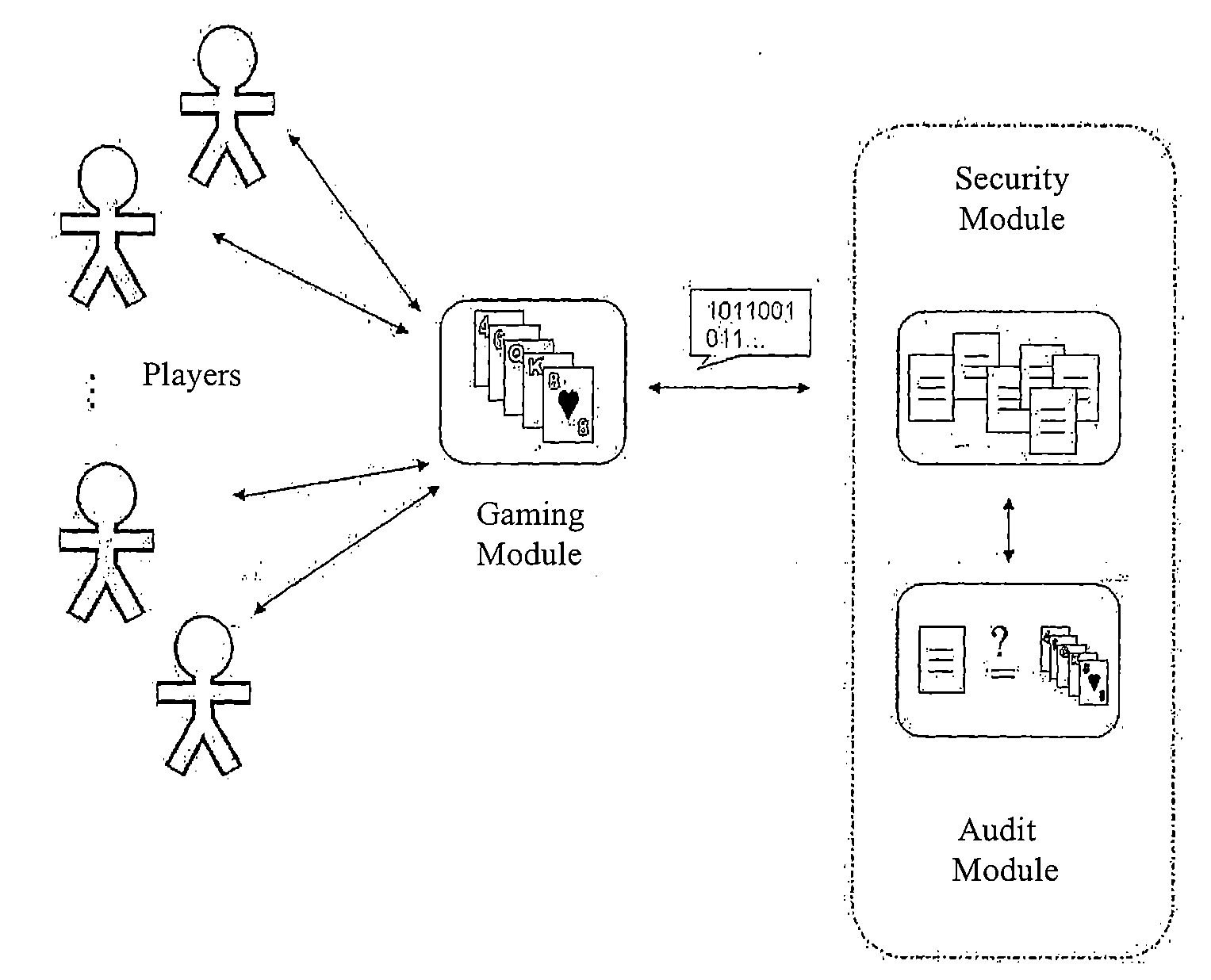Gaming by electronic means, in any of its forms, implies a lack of transparency that may produce suspicions and lack of trust regarding critical aspects of honesty and fairness.
In fact, in some occasions the lack of transparency of gaming by electronic means has been successfully utilized to
commit fraud.
Nonetheless, both mechanisms have serious deficiencies.
However, this inspection has no means to prove that the system will keep having, from that moment and on, those correct design and behavior.
Although some procedures to check for changes and manipulations in a
computer program do exist, the actual capability to easily and quickly substitute the critical correct modules by the fake ones and vice versa, prevents in practice these procedures from being successful as security measures.
Unfortunately, these audits are just able to warrant that the amount of prizes awarded is statistically correct.
However, they are absolutely unable to prove the fairness or honesty of the occurred games.
Given the previously introduced limitations of the main control mechanisms used by the electronic gaming industry, there is currently some unrest regarding the
trustworthiness of the games by electronic means.
The following issues can be highlighted:1. In the case of remote electronic gaming, the identification of players is an issue.
The use of low-quality player identification allows fraudulent actions, such as money laundering.
Nonetheless, these records are insufficiently protected against internal attacks (e.g., from technical staff with privileged access to the electronic gaming system).
As a result, the truthfulness of the records remains unsure.
However, this identification mechanism is clearly insufficient since any person can impersonate another just by having access to the
credit card of the latter (which is relatively easy for example in the case of members of the same family or if the
credit card was stolen).
In addition, this mechanism is not satisfactory for the management of lists of auto-excluded players or problem gamblers.
However, the “loginame /
password” mechanism has well-known weaknesses that make its use inadequate in open networks.
However, biometric identification has its own disadvantages.
On one hand, it is too intrusive for the player.
On the other hand, in remote gaming environments, it is still not clear how to ensure that the reading of the biometric pattern takes place at the time of the game (i.e., that it does not provide from a previous reading).
With regard to the
trustworthiness of the generation, by electronic means, of random events, the root of the problem is in the
vulnerability presented by excessively centralized generations.
Not only none of the parties is able to manipulate the outcome of the electronic joint generation of random events, but also none of the parties has any privileged information regarding future random events.
Nonetheless, the main problem of these proposals is their lack of practicality, since they require the
active participation of the players in the process of joint generation of randomness.
In practice, this creates a dependency on the behavior of unknown and highly heterogenic systems (i.e., the
client systems used by players).
Still, the players in this case would not be able to verify by themselves that the generation of randomness had been fair.
None of them however develops any solution to the issue of the fairness of the generated randomness.
Finally, the third trust problem that is still not adequately solved refers to the possibility of inspecting and auditing electronic gaming systems.
Currently, however, the external control of these characteristics relies on audits that depend excessively upon data provided by the games operator itself.
In addition, these data are not adequately protected and, as a result, they could be very easily manipulated.
Up to date, there are no proposals, efficient enough, that introduce methods to audit in a secure way the occurred games.
However, the auditing method proposed by both inventions is not efficient and is not completely secure in real electronic gaming environments.
Additionally, these proposals do not provide any mechanisms to ensure that the digital information to be audited has not been manipulated during the games or afterwards.
In addition, the auditing process is generally not addressed in previous inventions.
Those proposals that address this issue, propose costly (given the huge amounts of data to be processed in real time during the games) and not reliable (because of their dependency on data that is not adequately protected) auditing mechanisms.
Moreover, these auditing mechanisms do not provide any conclusion regarding the identity of the players that have participated in the games.
 Login to View More
Login to View More  Login to View More
Login to View More 


